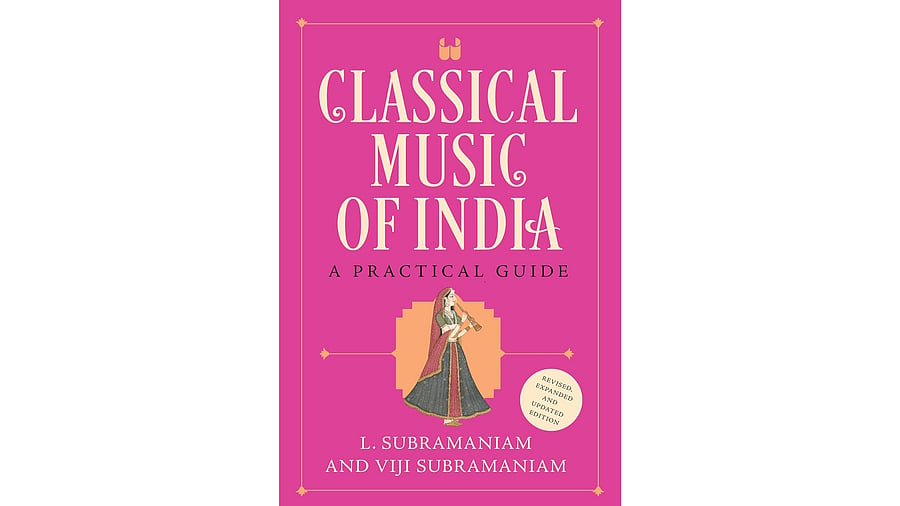
Classical Music Of India
Distinguished musicians L Subramaniam and late Viji Subramaniam co-authored a book a while ago, Classical Music of India-A Practical Guide, as a tribute to the many aspects of music. A revised and updated edition has now been released. Embedded in their writings are musical histories which are manifold, the melodic and rhythmic aspects of musical systems, microtonal nuances of notes and myriad related concepts. The authors, with sensitive dexterity, unlock the abstract and sublime aspects of music, decoding the DNA of this art form.
While reading the book, one can almost hear the primal energies of sound and music of a soundscape that is rare and precious.
The book has had an interesting journey and life. In its very first avatar, published in 1990, it was titled ‘Euphony’. LS, as a student at the California Institute of the Arts, was offered a teaching position. The brief was to teach music to students from different musical backgrounds, and some of them had no exposure to Indian music. A need was felt for a book with lucid explanations that could serve as a theoretical and practical guide for students.
Arrayed in eight neat chapters, the narrative arc builds upon a schema of meaningful storytelling. Maintaining integrity with the original research, the book has seen additions of significant concepts and updates.
In the opening chapter, to set context, an overview of Indian music is elucidated. The treatise explores the origin, evolution, mythological and spiritual mores of Indian music. The ancient musical treatises that birthed some of the finest creative ideas are honoured. Specific contributions by musicologists and composers like Amir Khusrau, Sarangdev, Purandara Dasa and Thyagaraja are etched.
After setting the plinth, the book chronicles the musical notation system. The seven notes of music are portrayed with simple explanations. Their musical characteristics are expanded in graphic tables and charts, and how music notes shape different styles of music is explained. The work moves on to give an account of the melodic and rhythmic concepts of Karnatik and Hindustani music. It goes on to cover how the crucial concept of Raga got its shape, the Melakartha system of Karnatik music, the gharanas of Hindustani music, as well as the concept of melody and how rhythmic patterns get composed. LS states that “rhythm cycles in Indian music are arguably one of the most developed and sophisticated systems”.
The storyline cruises to give a comprehensible comparison of Karnatik, Hindustani and Western music. As a veteran instrumental artiste, the chapter on musical instruments is scripted with a steady thrum of magic.
In the age of data available at the click of a finger, books like this stand out due to the insightful authorial voice.
Late Viji Subramaniam, as an award-winning vocalist, composer and multi-linguist, has brought to the book an informed erudition, a multidimensional ethos and deep research. LS has layered the writings with his knowledge of the violin, other musical instruments and his staggering ability to straddle various musical genres. Their research was interwoven with handwritten notes and musical knowledge of LS’ father, Professor Lakshminarayan. Indeed, the book is a cross-pollination of creativity in which it appears as if the maestros are gently sharing their knowledge.
We don’t just get to read history, but the historical relevance of each age. Musical sojourns range from ancient mores to post-independence times and depict the accompanying changes. The biographical sketches and notations pave the way for a student of music to understand the grammar of different styles.
It seems as if the musical world view of the two performing artistes and authors evolved and emerged to form a foundational book with a kaleidoscope range. One of the writers, Viji, died in 1995. In the epilogue, LS addresses the reader with a moving sentiment: “I gained everything because of music, and it is an inseparable part of my life. I hope music becomes a part of your life.”